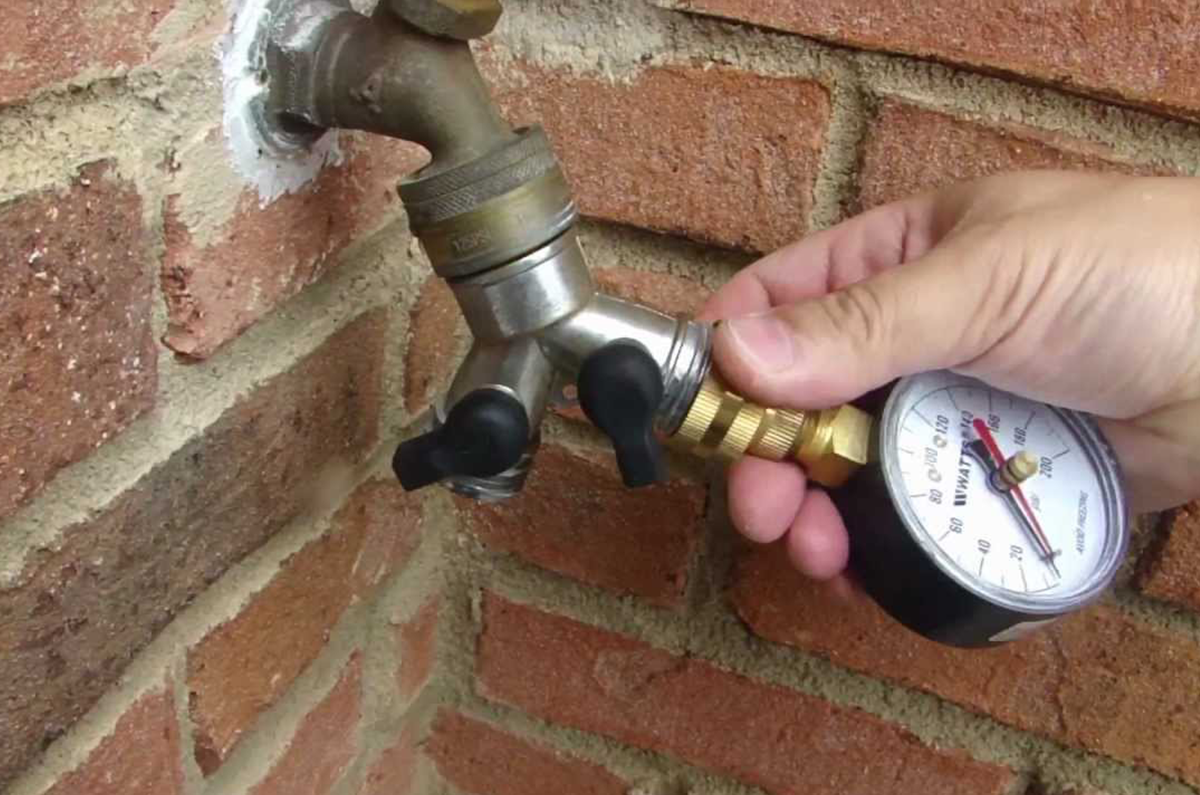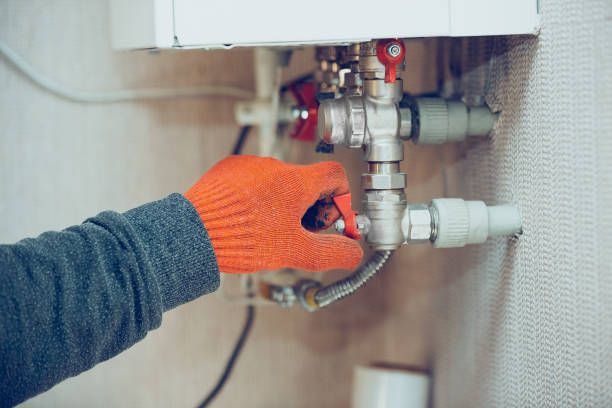Here on the next paragraphs you will discover a bunch of professional points with regards to 10 Reasons for Low Water Pressure in Your House.

Low tide stress in your house can be a discouraging trouble, influencing every little thing from showering to cleaning recipes. If you're experiencing weak water flow, there are several possible reasons and services to check out. In this overview, we'll talk about usual reasons for low tide pressure and functional actions to attend to the issue successfully.
Intro to Low Water Stress
Low tide stress occurs when the circulation of water from your faucets, showers, and other components is weaker than common. This can make everyday jobs more challenging and less efficient. Comprehending the root causes of low tide stress is essential to finding the appropriate service.
Common Reasons For Low Tide Pressure
Pipeline Obstructions
With time, pipelines can end up being blocked with mineral deposits, sediment, or particles, limiting the circulation of water. This is a typical problem in older homes with galvanized steel pipelines.
Corrosion
Deterioration within pipes can result in leaks and lowered water stress. Corrosion accumulation can restrict water circulation, specifically in maturing plumbing systems.
Faulty Stress Regulatory Authorities
Pressure regulators are accountable for preserving regular water pressure in your home. If they malfunction, it can result in low tide pressure or uneven circulation throughout your home.
Community Water Issues
Occasionally, the problem lies outside your home. Municipal water concerns, such as main line leakages or upkeep work, can momentarily lower water pressure in your location.
How to Detect Low Tide Pressure
Examining Taps and Fixtures
Begin by testing the water pressure at various faucets and components throughout your home. If the issue is separated to specific areas, it may suggest local issues.
Evaluating Pipelines
Inspect visible pipelines for indications of leaks, rust, or clogs. Take notice of any uncommon noises, such as knocking or rattling pipelines, which might show issues within the plumbing system.
Consulting with a Plumber
If you're unable to determine the reason for low water stress, consider hiring a specialist plumber to carry out an extensive evaluation. They can determine underlying problems and advise appropriate remedies.
DIY Solutions to Fix Low Tide Pressure
Cleaning Up Aerators and Showerheads
Natural resources can accumulate in aerators and showerheads, decreasing water circulation. Get rid of and clean up these elements on a regular basis to improve water pressure.
Flushing Hot Water Heater
Debris accumulation in the hot water heater can restrict circulation and lower effectiveness. Flushing the container regularly aids eliminate sediment and keep optimal efficiency.
Checking Stress Regulator
Make sure that the stress regulatory authority is operating appropriately. Adjusting or replacing the regulator can assist restore correct water stress throughout your home.
Clearing Up Clogs in Water Lines
For minor blockages, try utilizing a plumbing serpent or chemical drainpipe cleaner to clear obstructions in pipes. Be cautious when using chemicals and adhere to safety and security standards.
When to Call a Specialist Plumber
If do it yourself efforts stop working to solve the issue or if you suspect substantial plumbing issues, it's best to seek assistance from a licensed plumber. They have the experience and tools to attend to complicated issues securely and successfully.
Safety Nets to Keep Water Pressure
Normal Maintenance
Schedule regular maintenance for your plumbing system to stop problems such as deterioration, leakages, and blockages. Addressing small issues early can assist stay clear of more significant fixings later on.
Mounting a Stress Booster
Think about setting up a pressure booster pump to boost water stress in areas with continually low flow. This can be specifically valuable for multi-story homes or residential properties with high-demand components.
Monitoring Water Use
Bear in mind water use practices and avoid ill-using the plumbing system. Simple modifications, such as incredible showers and washing tons, can assist maintain ample water stress.
Conclusion
Dealing with low tide stress can be frustrating, however determining the underlying reasons and applying proper remedies can bring back ideal circulation throughout your home. Whether it's cleansing aerators, checking pipes, or speaking with a plumber, taking positive actions can make sure a steady supply of water for your everyday requirements.
How to Fix Low Water Pressure In Your Home
Municipal Water Supply Issues
Scheduled maintenance, high demand, and water main breaks are all potential causes for low water pressure within a city or county’s water lines. While there’s not much you can do to personally fix a problem with your city or county’s water supply system, you can play a big role in documenting the issue and alerting those who can.
How to fix it:
Ask your neighbors if they are experiencing any issues with low water pressure. If multiple homes are affected, it’s likely related to the city’s water line.
Contact the local Water Authority to see if there is any maintenance taking place that might be affecting your supply. Also let them know of your specific issues. If other homeowners report the same issues, they’ll know that there could be a larger issue to look into.
Faulty Fixtures
A damaged or clogged shower head, faucet or appliance is the first thing we’d suggest checking, especially if low water pressure appears to be isolated to a specific area of your home.
How to fix it:
First, turn off the main water supply to your home.
Check the affected appliances for build-up or debris. In the case of a faucet, you can simply unscrew the aerator at the tip of the faucet. Showerheads should be fully detached from the water pipe.
While the appliances are detached, you may want to check the water supply to determine if the fixtures were in fact the issue.
To clean, soak the showerhead or aerator in vinegar and brush off any visible debris.
Reattach the fixtures and check the water pressure again. If it is still low, there is likely a deeper issue at hand, which can be determined by a professional plumber.
Pipe Obstructions
Mineral deposits, rust or other debris within water pipes can lead to blockages or corrosion over time.
How to fix it:
When you think of a clog, you probably think of a drain clog. While there are many DIY solutions to clearing a drain, clogs in a water pipe will almost always require the help of a professional plumber. A plumber will be able to locate the affected pipe and clean out any debris or mineral deposit buildup. In severe cases, the pipe may need to be replaced. Your plumber might also recommend a water softening system to remove the minerals from your home’s water supply that can contribute to pipe blockages over time.
Plumbing Leak
Undetected water line leaks can divert water away from your residential pipes, reducing the water pressure in your fixtures.
How to fix it:
Check your water meter by turning off all water sources and monitoring the meter for any movement, which could be a clear indicator of a potential leak.
Check all visible pipes for signs of leaking, including water stains, active dripping or damp spots around the pipe.
Inspect fixtures, including faucets and showerheads, for any drips.
Test the pressure but recording the pressure with the main water valve shut off. Leave off for a few hours and test again. A significant drop in pressure is a clear sign of a leak.
https://kiddcoplumbing.com/plumbing-blog/how-to-fix-low-water-pressure/

How to Fix Low Water Pressure In Your Home
Municipal Water Supply Issues
Scheduled maintenance, high demand, and water main breaks are all potential causes for low water pressure within a city or county’s water lines. While there’s not much you can do to personally fix a problem with your city or county’s water supply system, you can play a big role in documenting the issue and alerting those who can.
How to fix it:
Faulty Fixtures
A damaged or clogged shower head, faucet or appliance is the first thing we’d suggest checking, especially if low water pressure appears to be isolated to a specific area of your home.
How to fix it:
Pipe Obstructions
Mineral deposits, rust or other debris within water pipes can lead to blockages or corrosion over time.
How to fix it:
When you think of a clog, you probably think of a drain clog. While there are many DIY solutions to clearing a drain, clogs in a water pipe will almost always require the help of a professional plumber. A plumber will be able to locate the affected pipe and clean out any debris or mineral deposit buildup. In severe cases, the pipe may need to be replaced. Your plumber might also recommend a water softening system to remove the minerals from your home’s water supply that can contribute to pipe blockages over time.
Plumbing Leak
Undetected water line leaks can divert water away from your residential pipes, reducing the water pressure in your fixtures.
How to fix it:
https://kiddcoplumbing.com/plumbing-blog/how-to-fix-low-water-pressure/
Do you enjoy reading up on Low Water Pressure in the House?? Give a short review below. We'd be glad to know your ideas about this content. In hopes that you come back again in the near future. Those who enjoyed reading our page plz make sure you remember to pass it around. Many thanks for your time. Please come visit our blog back soon.
Call